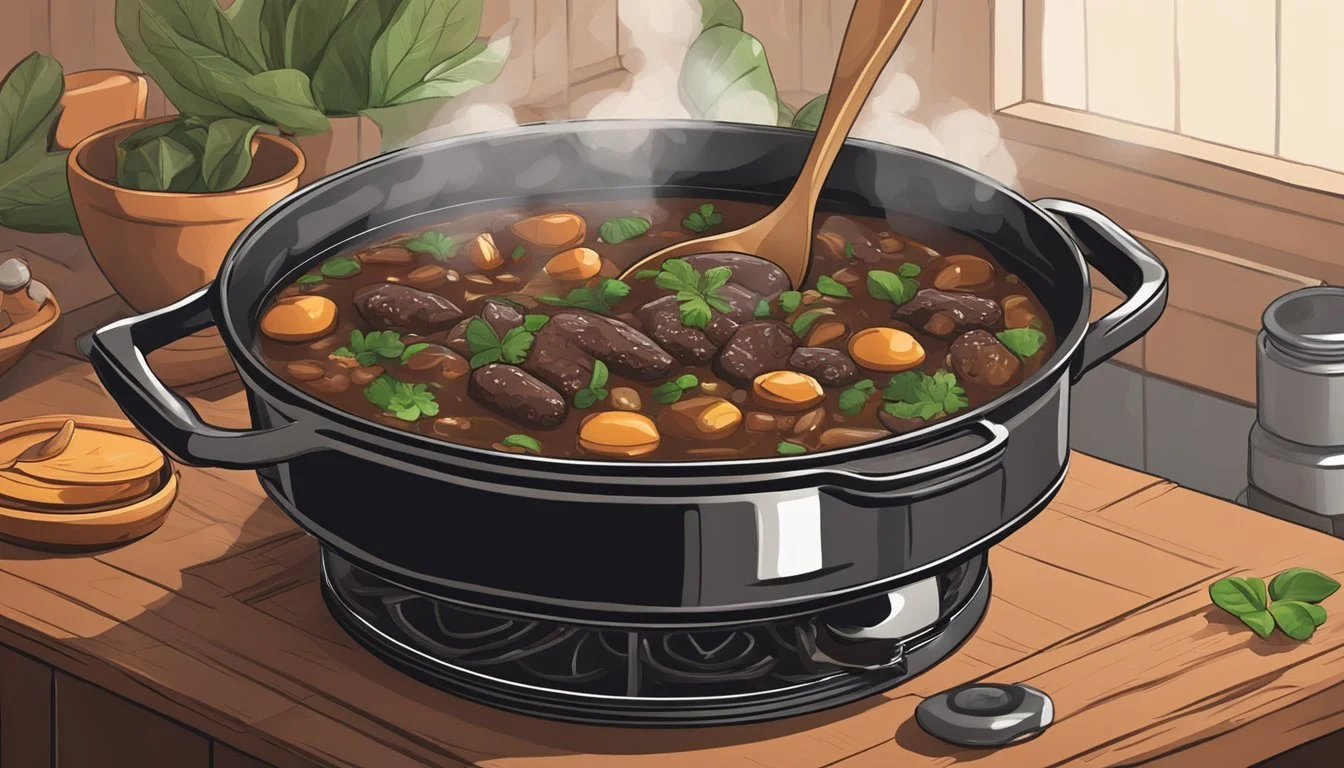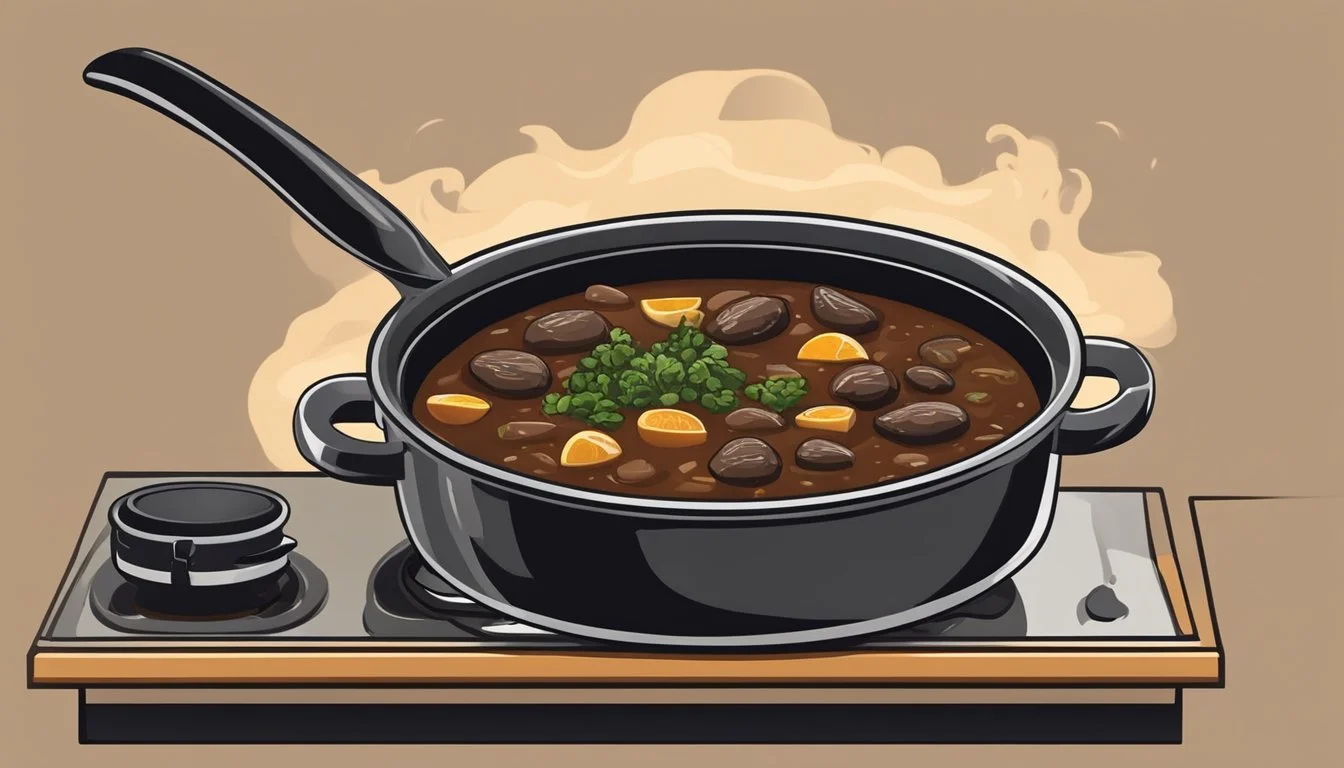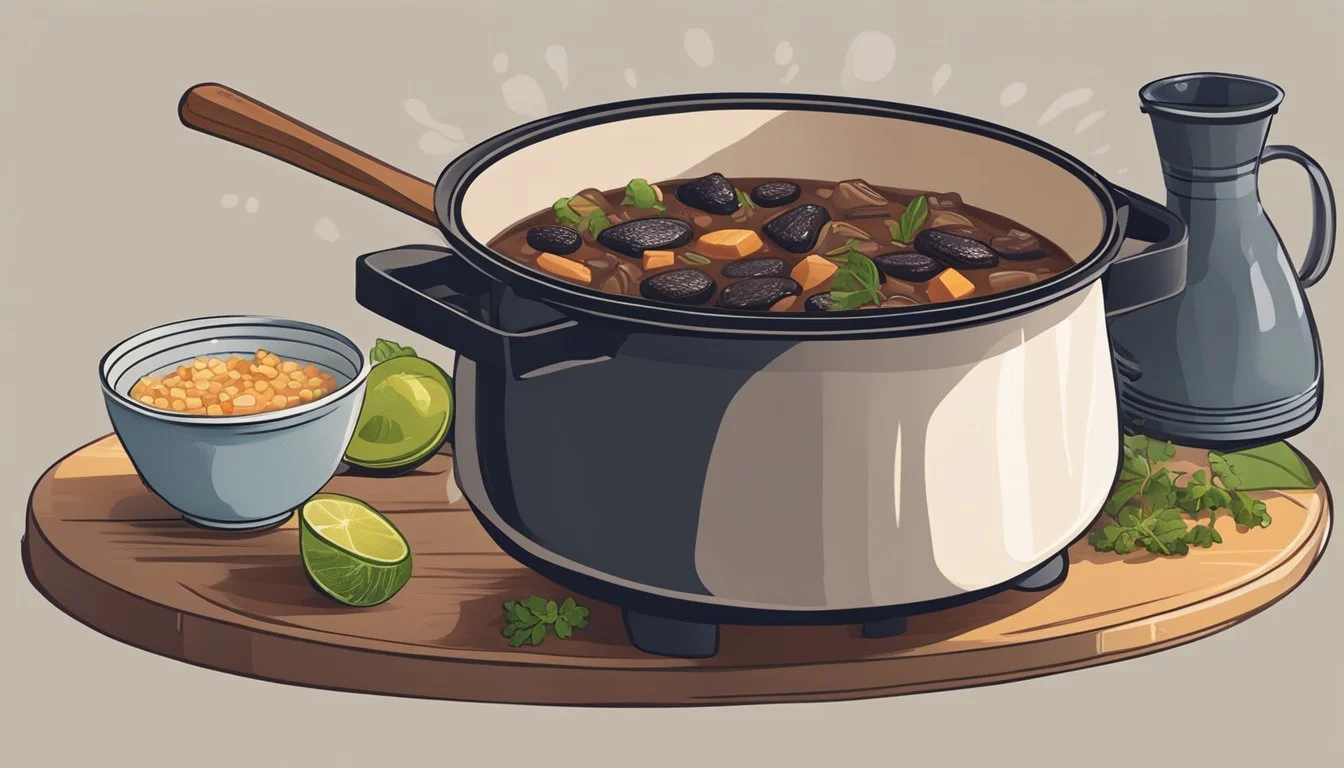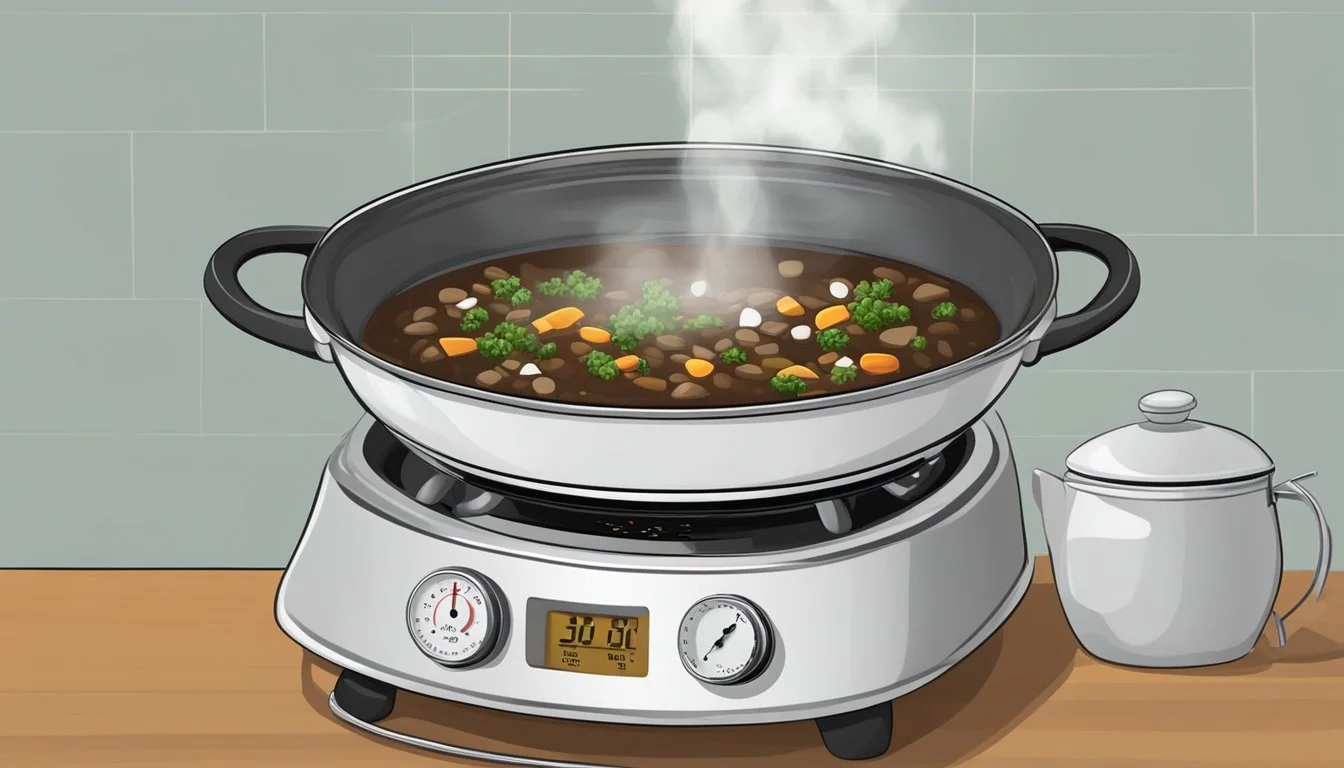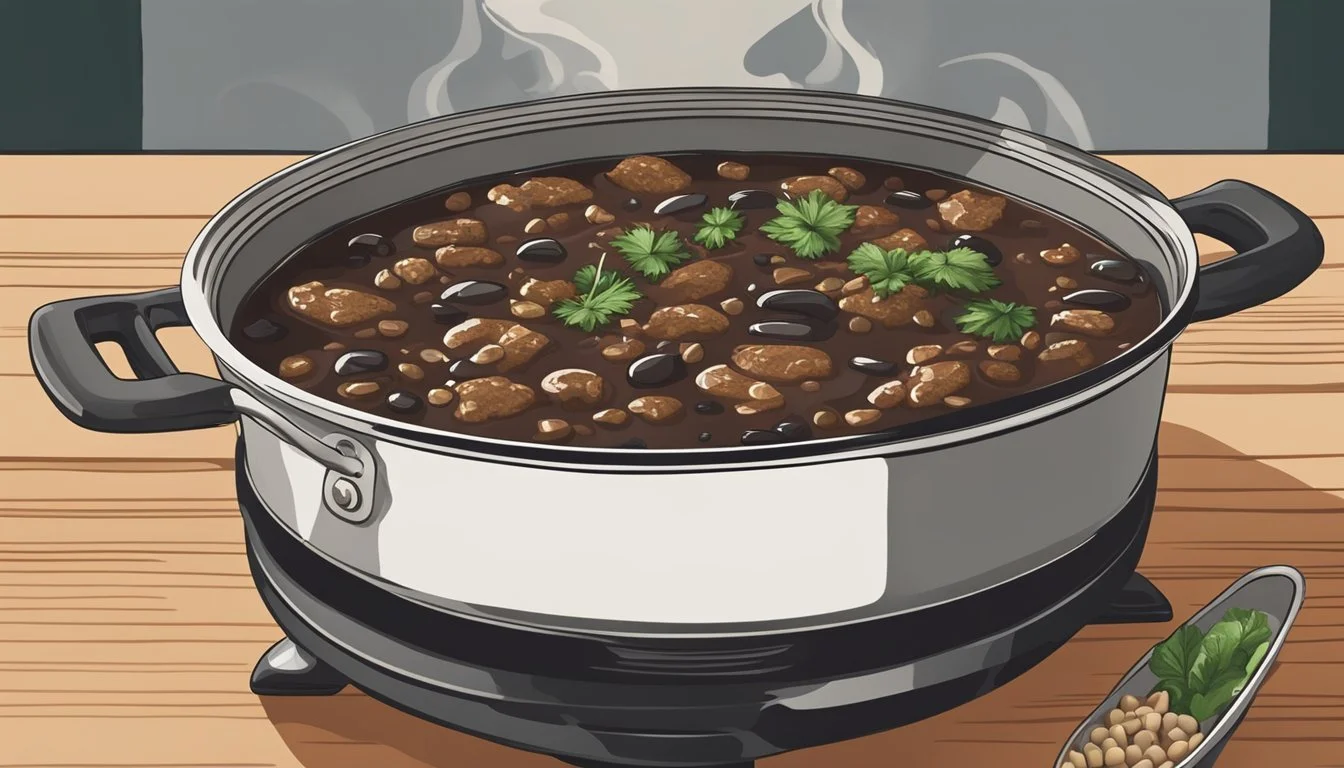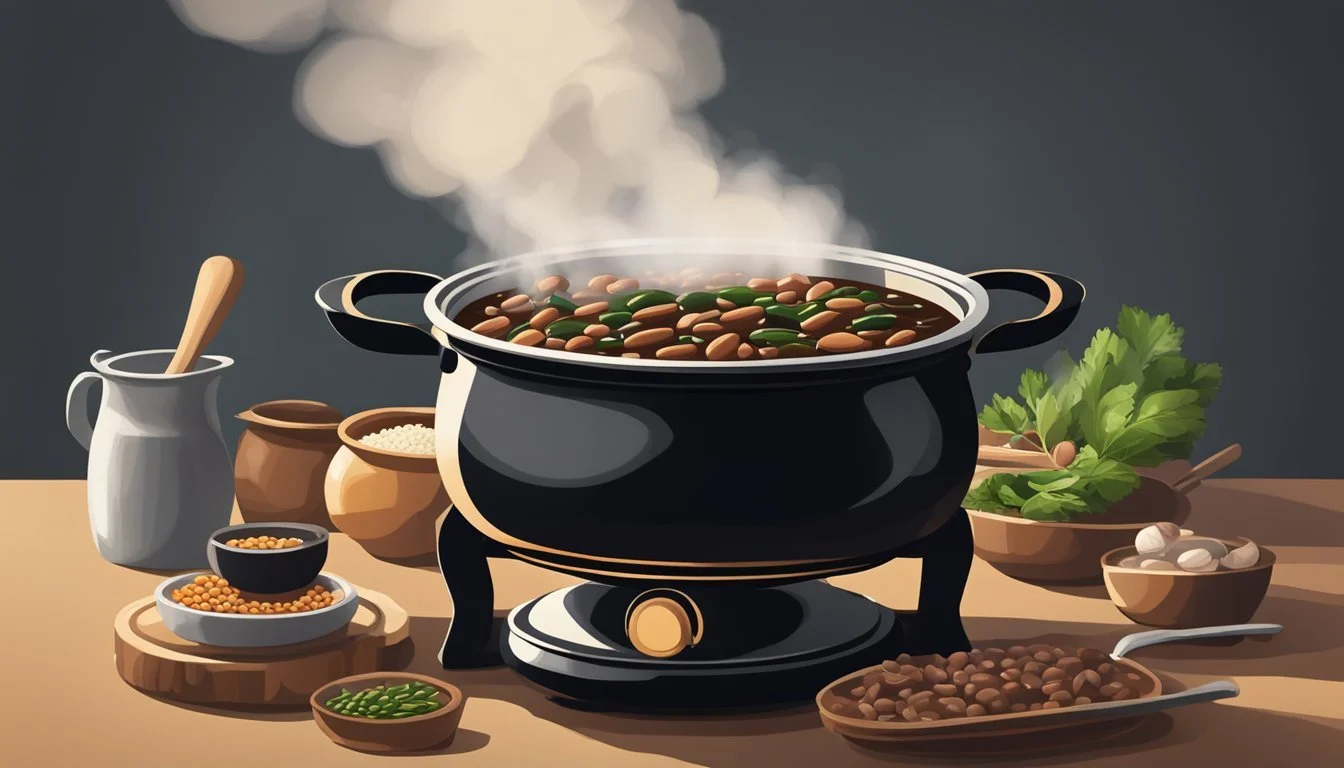How to Reheat Feijoada
Best Methods for Perfect Flavor and Texture
Feijoada, the National Dish of Brazil, embodies the rich cultural tapestry of Brazilian cuisine with its hearty blend of black beans and an assortment of meats. Whether enjoyed fresh from the pot or savored as leftovers, proper reheating is essential for preserving its rich flavors and aroma. The dish's unique combination of ingredients makes it a versatile and satisfying meal, beloved by many.
Storing Feijoada correctly plays a critical role in ensuring a delectable second serving. Once cooled to room temperature, it should be placed in airtight containers and refrigerated. When ready to reheat, methods such as the microwave or stovetop can efficiently revive its taste and texture.
For a quick and convenient option, using a microwave is effective. Place a portion of Feijoada in a microwave-safe dish, cover it to maintain moisture, and heat for a few minutes, stirring halfway through. This practice not only makes Feijoada easily accessible but also helps in maintaining its authentic flavor profile for future enjoyment.
Understanding Feijoada
Feijoada, Brazil's national dish, is a rich and hearty black bean stew featuring a variety of meats. This section delves into its origins, key ingredients, traditional accompaniments, and regional variations.
Origins and Significance
Feijoada originated in Brazil, with roots tracing back to Portuguese culinary traditions. It reflects Brazil’s diverse history, combining European, African, and indigenous influences. Historically, it was considered a meal for the working class, utilizing cheaper cuts of meat. It is now a revered symbol of Brazilian culture and is traditionally enjoyed during family gatherings and celebrations.
Authentic Ingredients
A traditional Feijoada includes black beans, which are essential for its deep, savory flavor. Various meats such as pork, beef, and carne seca (dried beef) are customary, with cuts like pork shoulder, ribs, and smoked sausage adding rich, layered flavors. Garlic, onions, and bay leaves provide the aromatic base, while beef or chicken stock is used for simmering. Salt and pepper are added to taste.
Traditional Accompaniments
Feijoada is typically served with rice and farofa, a toasted cassava flour mixture. These neutral accompaniments balance the strong flavors of the stew. Orange slices are often included, offering a fresh, citrus contrast to the rich, meaty stew. In some regions, collard greens sautéed with garlic and bacon are also a popular side dish.
Variations Across Brazil
Different regions of Brazil offer unique takes on Feijoada. In Rio de Janeiro, the dish is predominantly made with pork and includes smoked sausage and carne seca. In the Northeast, variations might include local ingredients such as sun-dried meat and different types of beans. Each version retains the core essence of Feijoada but showcases regional flavors and preferences.
Preparing Feijoada for Reheating
Proper preparation of Feijoada before storage ensures the best taste and texture when reheated. Key steps include handling the initial cooking process carefully and ensuring correct cooling and storing techniques.
Initial Cooking Process
When preparing Feijoada, one should start by soaking the beans and meat, such as pork and beef, in cold water. This step, taking around 24 hours, helps to soften these primary ingredients.
While cooking, the use of bay leaves, garlic, and onion imbue the dish with its signature flavors. It is crucial to avoid adding salt at this stage to prevent the beans from hardening.
Cooking methods vary, but a pressure cooker can speed up the process, taking about 35-40 minutes. Ensuring the consistency is thick and creamy is vital, avoiding an overly dry or watery finish.
Cooling and Storing
After the Feijoada is cooked, let it cool down to room temperature before storing. Rapid cooling can be achieved by dividing the stew into smaller portions, which also makes reheating easier.
For storing, airtight containers help maintain freshness. In the refrigerator, Feijoada can last for up to three days. For longer storage, it can be frozen in freezer-safe containers for up to three months.
Labeling the containers with the date of storage is a good practice. When reheating, ensure to defrost thoroughly if frozen, either overnight in the refrigerator or using a microwave’s defrost setting.
Proper cooling and storing of Feijoada retain its flavors and textures, making reheating a seamless task.
Reheating Feijoada
Reheating Feijoada can be done using several methods including the stovetop, oven, and microwave. Each method has its own advantages and ensures that the Feijoada retains its flavor and consistency.
Stovetop Method
To reheat Feijoada on the stovetop, begin by placing the leftovers in a large pot. Add a small amount of water or beef/chicken broth to prevent the stew from drying out during reheating.
Set the stove to a low temperature to allow the Feijoada to simmer gently. Stir the stew occasionally to ensure even heating and prevent sticking. If the consistency appears too thick, continue to add water or broth in small increments.
Heating slowly on the stovetop helps maintain the dish’s original flavors and ensures a uniform heat distribution. It is important to monitor the temperature closely to avoid overcooking.
Oven Method
Using the oven to reheat Feijoada provides an even heat distribution. Preheat the oven to 325°F (160°C). Transfer the Feijoada to an oven-safe dish and cover it with aluminum foil to trap moisture.
Place the covered dish in the oven and reheat for approximately 20-30 minutes. Check the consistency periodically, adding a little water or broth if needed.
This method is ideal for reheating larger portions and helps maintain the dish’s moisture without drying out. The use of aluminum foil is crucial in preventing the top layer from becoming too dry or crispy.
Microwave Method
For quick and convenient reheating, the microwave method is highly effective. Place a portion of the Feijoada in a microwave-safe dish. Cover the dish with a microwave-safe lid or damp paper towel to retain moisture.
Set the microwave at medium power and heat for 2-3 minutes. Stir halfway through to ensure even heating. If needed, continue heating in 30-second intervals until the desired temperature is reached.
The microwave method is perfect for single servings and ensures that the Feijoada warms quickly. However, frequent stirring is important to avoid uneven heating and maintain the stew’s texture and consistency.
Ensuring Quality and Safety
Proper reheating and storage are critical to maintaining the quality and safety of Feijoada, a traditional Brazilian stew. This section covers how to manage temperature control and avoid contamination during the process.
Temperature Control
Temperature plays a vital role in preserving the quality and safety of Feijoada. The stew should be cooled to room temperature before storage. When reheating, it’s essential to ensure the internal temperature reaches at least 165°F (74°C) to prevent foodborne illnesses.
For microwave reheating, stir the Feijoada halfway through the process. This promotes even heating and prevents cold spots. Use a microwave-safe lid or paper towel to cover the dish, which helps retain moisture and flavor.
Oven reheating is another option. Preheat the oven to 300°F (150°C). Place the Feijoada in an oven-safe dish, cover with aluminum foil to prevent drying, and heat until it reaches the necessary temperature. Periodically check with a food thermometer to ensure consistent heating.
Avoiding Contamination
Avoiding contamination starts with proper storage. Feijoada should be stored in airtight containers in the refrigerator, typically for 3-4 days. Label the containers with the date to keep track of freshness.
During reheating, only heat portions that will be consumed immediately. Repeatedly cooling and reheating can degrade the quality and increase the risk of bacterial growth. Ensure all utensils and containers used are clean to prevent cross-contamination.
Best practices include washing hands before handling food and maintaining a clean workspace. Avoid leaving the Feijoada at room temperature for extended periods, as this can encourage bacterial growth. These steps help in maintaining both the flavor and safety of the dish.
Serving Reheated Feijoada
Feijoada is a hearty Brazilian stew that pairs perfectly with specific side dishes and toppings to enhance its rich flavors. Attention to these details ensures an enjoyable dining experience.
Side Dishes Recommendations
Rice: White rice is a traditional accompaniment to Feijoada. It absorbs the stew's flavors well, balancing the rich taste of the beans and meats. A serving of steamed white rice on the side can be presented in small bowls for easy portion control.
Farofa: This toasted cassava flour dish adds a crunchy texture to the meal. Lightly seasoned farofa can be spread over the Feijoada to offer contrasting textures.
Collard Greens: Sauteed collard greens provide a slightly bitter flavor that complements the stew's richness. Sauté these greens with garlic and a bit of olive oil for an authentic taste.
Orange slices: Fresh orange slices offer a refreshing palate cleanser between bites. They also add a touch of sweetness and acidity that brightens up the meal.
Condiments and Toppings
Hot Sauce: Offering a selection of hot sauces allows guests to adjust the heat level to their preference. Brazilian-style hot sauce made with malagueta peppers can be a perfect match.
Chopped Herbs: Freshly chopped cilantro and green onions add a burst of color and freshness. Sprinkle these herbs over the Feijoada just before serving.
Pork Cracklings: Adding crispy pork cracklings provides an extra layer of texture and saltiness. These can be sprinkled on top or served alongside for added crunch.
Pickled Vegetables: Pickled onions or carrots can offer a tangy contrast to the rich, savory stew. They enhance the overall flavor complexity without overpowering the dish.
Serving reheated Feijoada with thoughtfully chosen side dishes and toppings provides an enriched and balanced meal experience.
Conclusion
Reheating Feijoada involves maintaining its tender meat and rich flavors. Proper storage and reheating methods can greatly enhance its satisfying taste.
Final Tips for Enhancing Flavor
Store Feijoada Properly: Always let the Feijoada cool to room temperature before transferring it to airtight containers. This helps preserve the flavors and prevents any bacterial growth.
Reheating Methods: When reheating on the stovetop, use medium heat and stir occasionally to ensure even heating. If the stew thickens too much, add a bit of water or broth to reach the desired consistency.
Seasoning Adjustments: Tasting and adjusting the seasoning after reheating is crucial. Adding a pinch of salt, or a squeeze of lime juice can brighten the flavors.
Serving Suggestions: For the best experience, serve reheated Feijoada with traditional sides like rice, collard greens, and orange slices to complement its rich taste. Adding fresh herbs like chopped parsley can also lift the dish.


